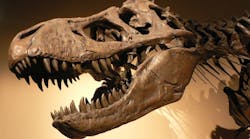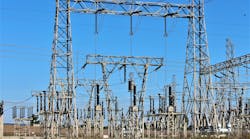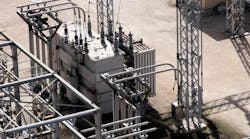I recently sat down with a man who leads one of the biggest utilities in America. We chatted about the state of our industry. As we talked, the focus shifted from where we are to where we need to be if the institution we all care so deeply about is to survive and prosper. I don’t need tell you about the many challenges we face — from aging infrastructure to distributed generation and electric vehicles; from renewable portfolio standards to SAIDI and SAIFI; from nuclear woes and once-through cooling to carbon; from smart grid to rate shock — all compressed into the span of a career.
As Charles Dickens said: “It was the best of times, it was the worst of times, it was the age of wisdom, it was the age of foolishness…we had everything before us, we had nothing before us…”
Having worked in our industry for parts of five decades, I have seen both wisdom and foolishness. I’ve witnessed the result of “burning platforms” and “radical change” — and it usually wasn’t pretty. Simply desperately doing a lot of something is not progress. It’s Brownian motion, and the outcome is more a matter of luck than skill. That’s not what we need when it comes to our nation’s distribution system.
Many utilities are requesting and spending record amounts on distribution infrastructure replacement and a variety of equipment and systems that are being sold as manifestations of “The Smart Grid,” writ large. As has always been the case, connecting with something trendy and cool is usually a good strategy with regulators and investors, and can sometimes involve as much smoke and mirrors as it does reliability or safety or rate mitigation. Sorry, but we all know it’s true. The reality is that America’s distribution infrastructure was, for the most part, built as our troops came home from World War II and has served us incredibly well ever since. The real problem is that for half a century, we generally maintained our systems on a break-fix basis and not reliability-centered maintenance or some similar rubric that would have had us invest on a fact-based schedule. And, of course, it was inevitable that this approach ultimately would lead to a “bow wave” of failures that would create difficult public policy and rate issues. But now we’re here, and we’ve often passed the point of inflection on the infamous “bathtub curve.” So what is it that we can do?
First, let me offer an opinion on things we can’t do, regardless of how much rate base they create: We can’t simply keep asking for an almost unlimited amount of money to replace old stuff, like-for-like, as fast as we can. For example, a lot of old underground cable is failing. But those failures are often only vaguely related to age, and trying to replace it all on a wholesale basis takes many years, costs vast sums and can severely impact reliability.
I once put a slide on the screen that said, “Distribution reliability will decline for the next several years. And there’s nothing you can do about it.” That got some attention. It wasn’t intended to be humorous or even overly dramatic. The simple fact is that, for most of us, the task ahead is dauntingly large. And we won’t get to do it again in a couple years, like we could if we’d just bought the wrong cell phone. And, by the way, we also can’t (or at least shouldn’t) ask for piles of money from our ratepayers to install the latest widgets simply because they’re neat and answer esoteric questions that we’ve always wondered about. Why not? Because our customers usually don’t give a damn about those things. And a grid that doesn’t serve customers better isn’t really smart at all, it’s just showmanship.
So, if we can’t afford the cost and the outages to just replace everything that’s old, and we shouldn’t just put in the coolest, high-tech stuff, then what can we do? First, we can dedicate ourselves to developing the tools to identify and replace the right things at the right time. Then let’s be really thoughtful about how to change the distribution system to support the transformation that is already happening — from a one-way passive relationship to a two-way interactive one. What should we be installing to allow the assimilation of plug-in electric vehicles? How about distributed generation? I could go on, but you get the idea. Finally, how do we pick the “new tech” devices and systems that can make a real difference to customers, and then give them simple, actionable information that transforms how they think, feel and act relative to energy?
As we talked about how an enlightened utility, guided by enlightened regulators, would cope with all this change, a thought hit me. I asked this industry leader, “Do you ever wonder why there are no dinosaurs on earth now but billions of cockroaches?” He looked at me as though I’d lost my mind. So I answered myself: “Because cockroaches evolve quickly to meet their environment. And dinosaurs didn’t.” He got my point.
This, colleagues, is our challenge. How do we act quickly and decisively, but with wisdom and thoughtfulness and humanity? Because, I believe, the failure to do so will condemn us to the fate of the dinosaurs.
James A. Kelly ([email protected]) was senior vice president of T&D for Southern California Edison. He now works with youth and teachers to promote STEM education in the U.S.


